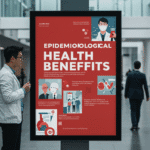Death Be Not Proud
End-of-life discussions are the discussions du jour among the affluent chattering classes. Most of whom are comfortably insured, healthy, with trusted physicians who know them well. (Mea culpa.)
Death Be Not Proud
End-of-life discussions are the discussions du jour among the affluent chattering classes. Most of whom are comfortably insured, healthy, with trusted physicians who know them well. (Mea culpa.)
Recent articles appeared in the New York Times about end-of-life care. Pam Belluck wrote “Coverage for End-of-Life Talks Gaining Ground” late last month (http://www.nytimes.com/2014/08/31/health/end-of-life-talks-may-finally-overcome-politics.html). She described ways Medicare and other insurers, including some Blue Cross Blue Shield plans, will pay doctors and other clinicians to talk about peoples’ preferences about life-prolonging care. Most people she interviewed favored the idea. Some strongly so. A week later, readers responded to Ms. Belluck’s piece in a Sunday Review | Letters column dedicated to the topic (http://www.nytimes.com/2014/09/07/opinion/sunday/a-talk-before-dying.html?ref=opinion). Four of the five printed letters were in favor of end-of-life conversations underwritten by insurers. One writer from Sag Harbor, NY demanded such discussions be required. Just one writer, a professor of medicine, urged caution.
End-of-life talks promoted by the well-off are a profoundly troubling notion.
Death Panels Redux?
No, not the death panel argument again. Though the prospect that an insurer may benefit from my quick death is disquieting enough. That they’re willing to pay my physician to talk me out of expensive treatment makes it more disturbing. Insurance companies don’t pay for anything unless it delivers a return on investment. Insurers are betting people will ration their own care. Forty bucks for visits that convince folks they don’t want forty thousand dollars’ worth of care is an enviable ROI.
The trouble seeps into the bedrock of our deeply unequal society. These efforts may harden into yet another way to deprive the worse-off of care. Another way to privatize profits and socialize risks. Under the banner of “personal choice”.
It’s happened before. Secure pensions morphed into 401(k)s so people could “control their retirement money”. Now many Americans will have no retirement because they have no retirement money. High-deductible health plans were originally called consumer-directed health plans. Made the plans sound egalitarian. An increasing number of people are saddled with HDHPs. They have deductibles so high they are, in effect, uninsured. Even for catastrophic costs in some cases.
Juxtapositions
The push for end-of-life discussions percolated up against a backdrop of disheartening news. The Department of Agriculture released the annual report on food insecurity in America this month (http://www.ers.usda.gov/media/1565415/err173.pdf). Fourteen percent of us didn’t get enough to eat in 2013. That’s 17.5 million households. The largest number of hungry souls are in Arkansas at 21 percent of households. North Dakotans fare best. Only 8.7 percent of households there were food-insecure.
The other fascinating read of the past week (no, really) was the bulletin published every three years by the Federal Reserve. Titled Changes in U.S. Family Finances from 2010 to 2013: Evidence from the Survey of Consumer Finances, it’s a thorough study of family finances nationwide (http://www.federalreserve.gov/pubs/bulletin/2014/pdf/scf14.pdf). The survey showed distressing trends and the introduction summarized it nicely: “The 2013 SCF reveals substantial disparities in the evolution of income and net worth since the previous time the survey was conducted, in 2010.”
The survey put numbers to the widening financial inequality in America. Median family income fell 5 percent, as more money flowed upward. Families in the middle have not made up for losses suffered during the collapse of 2007-2010. Families at the “very top” saw widespread income gains compared to the prior survey, though even they were below 2007 highs. Average incomes fell 8 percent for the families in the bottom 20 percent of income distribution. The families in the top 3 percent snagged 30.5 percent of all income last year.
End-of-Life Care?
 Back to end-of-life-discussions.
Back to end-of-life-discussions.
Food-secure people with low incomes are more likely to have poor health. They may not have insurance. Or they recently became insured thanks to the ACA, unless they live in states where government intransigence has denied them Medicaid. For employed folks, chances are good their employers offer only HDHPs, with unaffordable deductibles. Maybe they’re lucky. They’re old enough to finally make it to the Medicare promised land.
Food-security has a distribution that tracks income. Families at the top can afford plenty of fresh produce, fish, lean meat and other organic goodies. Families bumping along at the bottom may have enough to eat. They may not go to bed hungry. But bellies are not filled with wild salmon, baby kale and fresh raspberries. Filling, cheap and unhealthy foods are more likely on the menu. Foods that contribute to chronic illness.
Millions of Americans have gone without health insurance for years. They haven’t seen doctors. They eat badly. They have little disposable income. Perhaps their health is poor, beset with diabetes, high blood pressure, heart disease or worse. At long last, able to get some care thanks to Medicare, Medicaid or Obamacare, these people go to doctors for the first time. To be greeted with, “Congratulations, you finally have insurance. Now, let’s talk about how you want to die.”
Of course, if people don’t want to talk about dying just yet, there’s another way. Maybe they’ll starve first.







